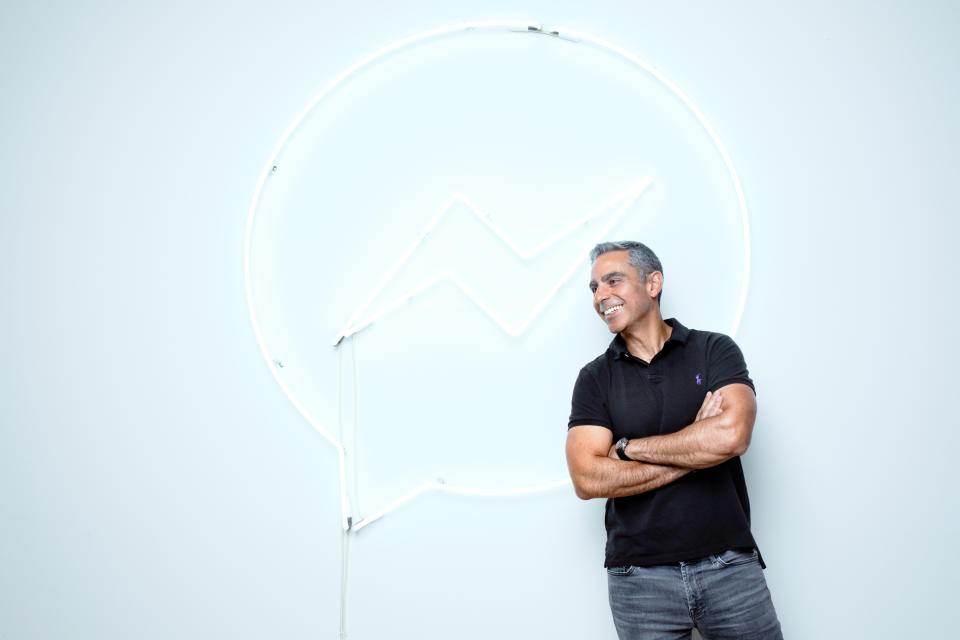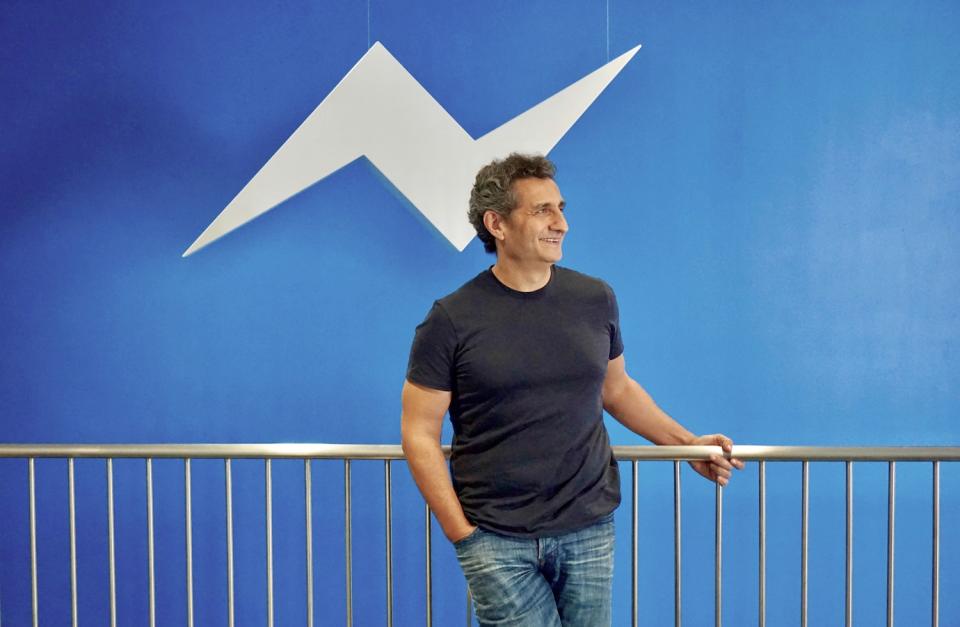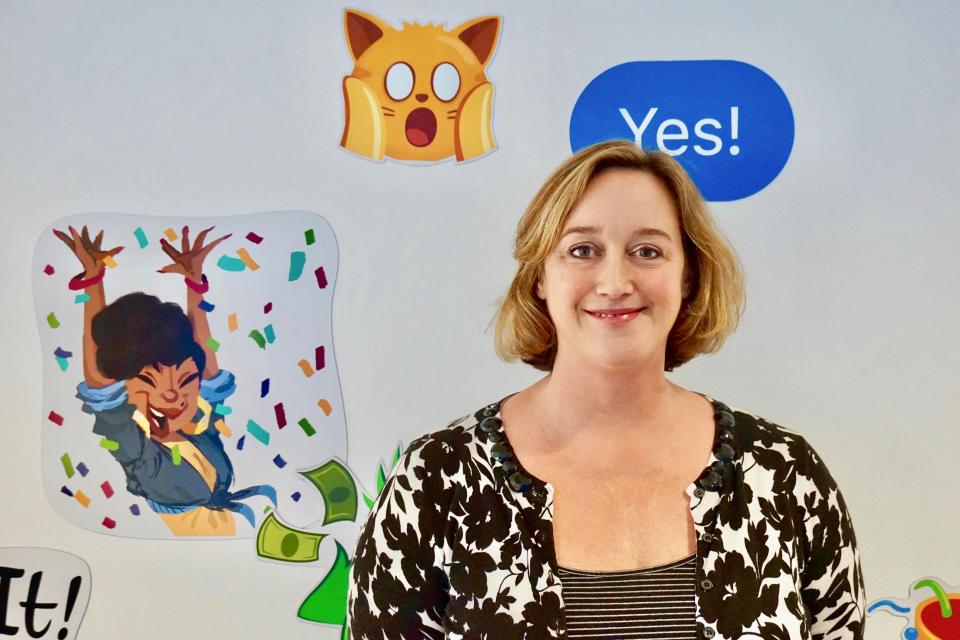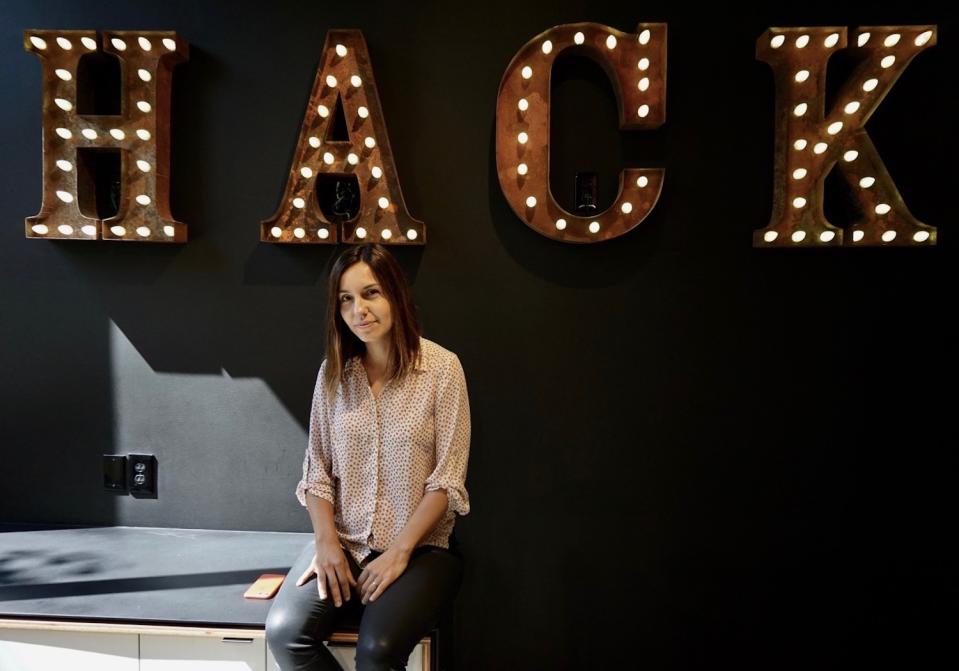Meet the man behind Facebook Messenger's growth spurt
Some Facebook (FB) users hate change — that’s just a fact.
Back in 2014, many users became incensed when Facebook Messenger was spun out into a separate app people had to download if they wanted to continue sending messages.
Three years later, many people have embraced the very app that once irked them. The popular messaging platform told Yahoo Finance this week that 1.3 billion people are using it now every month to send messages to friends as far-flung as Germany, Nigeria, Peru and Turkey — up from 1.2 billion in April. Over 400 million people call or video chat one another through Messenger every month.
And for the first time, Messenger revealed how its Snapchat Stories-like feature, Messenger Day, is actually doing. Up to 70 million people use the feature each and every day to post video and photo updates that disappear in 24 hours, according to Head of Messenger David Marcus.
Marcus hints the secret to unlocking even more users lies in getting as many businesses as possible to use Messenger. Of the roughly 70 million businesses currently on Facebook, over 20 million of those respond to customers via Messenger, hundreds of thousands of which do so through virtual bots that shoppers can interact with to learn, say, the status of their orders. And while Messenger remains in the early stages of making it a major go-to hub for customer service, it’s clear Marcus has huge ambitions there.
“I really, really feel that it’s going to be essential for us to be the go-to messaging app when you really want to interact with businesses,” Marcus explained.
The man behind Messenger’s massive growth spurt

Behind Messenger’s massive, carefully orchestrated growth spurt? Marcus himself. Since the 44-year-old French-American executive joined from PayPal (PYPL) in 2014, Messenger has been on a tear, seemingly embracing Facebook’s old adage — “move fast and break things” — and running heads-down with it. For Marcus and crew, convincing reluctant Facebook users they should download and use the app over the last three years meant beefing up the Messenger experience as quickly as possible to attract as broad a demographic as possible.
When he first arrived at Facebook, one of the first things Marcus sought to do was inject a brisk-moving startup-like atmosphere — an ethos honed from his years running startups such as the payments business Zong, the mobile payments company focused on online games and social networks acquired by eBay (EBAY) for $240 million in 2011.
“Founding and running startups is exhilarating in many ways,” Marcus tells Yahoo Finance. “There’s no overhead whatsoever. It’s life or death daily, and that’s such a powerful force to ensure focus and clarity.”

Before he joined, Messenger pushed out a software update at a downright leisurely pace of once every two or three weeks. Now it rolls out an update with new tweaks and features at least once a week. That’s thanks in large part to the 500 or so employees — up from just 40 when Marcus joined — now tinkering and toiling away in Building 15 at Facebook’s sprawling Menlo Park, California, headquarters, as well as Seattle and New York City.
Another former PayPal executive, Messenger’s Head of Product Stan Chudnovsky, called Marcus “a master of narrative” who sees the big picture but also isn’t afraid to roll-up his sleeves and “dive deep to a very low level” with a particular product, feature or problem.
“One of the things most important to David is the user experience,” adds Allison Swope, a Messenger product manager. “I would say that he takes that very seriously, and for updates, rolling out things faster makes the user experience better. That is the place from which I would say he comes, saying, ‘move faster, move faster.’ But he also really cares that we’re not breaking the user experience. We move fast, but we move very deliberately as a team.”
Creating a features-packed messaging app

Some of the new features Messenger has rolled out are utilitarian, like the ability to pay, call or video chat one-on-one or in groups, while others are more cutting-edge, like the virtual assistant “M.” Using artificial intelligence to recommend things to do based on what you and your friends are talking about, “M” currently suggests Spotify tracks to listen to, restaurants to order from, even when to call an Uber or Lyft.
Still other features may come across as superficial and lighthearted at first blush, like virtual stickers or masks you can wear on your face during, say, group video calls. But those same features are key to drawing younger emoji-loving, GIF-happy teens and millennials — the same highly-coveted demographic Snapchat (SNAP) has enjoyed for years. Messenger users send over 5 billion emoji and 380 million stickers every day, with 25,000 GIFs shared every minute.

Another newer feature, the Snapchat Stories-like Messenger Day, rolled out this March, joined similar features rolled out by Facebook, Instagram and WhatsApp. Marcus told Yahoo Finance up to 70 million people post ephemeral video and photo updates every day. Translation: it’s not going anywhere anytime soon.
Despite raising some eyebrows, particularly in the tech sphere, Paulina Bozek, product manager for Messenger Day, explains the Stories format is a concept that can and should be widely adopted as yet another way for people to communicate. After all, Facebook was hardly the first social network of its kind. Remember Friendster, MySpace or even Orkut?
“It [Stories] is bigger that Snapchat, it’s bigger than Facebook, and it’s bigger than Day,” Bozek explained. “And I think it would really make sense for us to be a part of that, and offer that, and I’m glad we launched that back in March, even though, at the time it seemed very few people were doing it.”
The next 1 billion users

But if the road to 1 billion-plus users was paved by a slew of features aimed at consumers, how does Messenger plan to get the next 1 billion?
Charlene Li, founder and principal analyst at the San Francisco-based Altimeter Group, suggests “M” remains a huge trove of untapped potential. It may make minor recommendations now, but in a few years, M could evolve into a savvy, virtual assistant that helps you truly navigate your day-to-day: booking travel, keeping track of appointments, and other administrative tasks you wish you could delegate. Startups like Magic and Fin, a venture from former Facebook executive Sam Lessin, are also developing affordable A.I.-powered virtual assistants that could one day replace the traditional executive assistant.
Then there’s the slew of businesses Messenger could partner with so users can interact with them on the app. According to Marcus, 65% of interactions with large businesses still occur over the phone, whether customers like it or not. But does he envision a day when businesses via bot replace the traditional customer service representative or call center?
“Yes, absolutely this is possible, and very likely!” he adds optimistically. “But I’d say it’s not about bots taking over customer care — it’s about messaging being the place where people will be the most comfortable communicating and interacting with businesses. Other channels are slow, often require your full attention, and don’t offer a consolidated view of all your past interaction. With Messenger, both you and the company have perfect context and never have to re-establish it again. Plus, I personally can’t wait to never, ever have to dial a 1-800 number again!”
Spoken like a true futurist.
—
JP Mangalindan is a senior correspondent for Yahoo Finance covering the intersection of tech and business. Email story tips and musings to [email protected]. Follow him on Twitter or Facebook.
More from JP:
